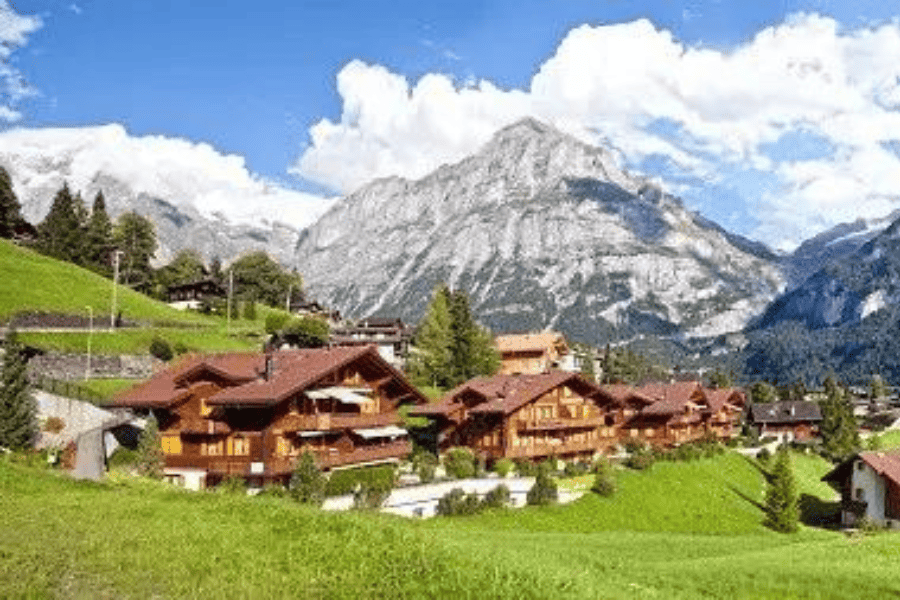Switzerland is known for its mountains. The population, however, lives mainly in the lower-lying plains of Switzerland. Three quarters of all inhabitants live in cities or their immediate catchment area.
At first glance, Switzerland has a medium population density of 215 inhabitants per square kilometre. However, large parts of the national territory are characterised by mountains. As a result, the majority of the population lives in the densely populated Central Plateau. The Central Plateau is the relatively flat and fertile area between the Jura mountain range and the Alps. It stretches from Lake Geneva to Lake Constance. The population density here is over 400 people per square kilometre.

There are no large cities in Switzerland with more than one million inhabitants. Nevertheless, the majority of the Swiss population lives in urban areas. The vast majority of the population lives in the urban core and in the area of influence of the urban centres. Almost half of the total population lives in Switzerland's largest urban centres alone - Zurich, Geneva, Basel, Bern and Lausanne. Urban and rural populations often vote differently. However, the facts show that the urban-rural divide in terms of lifestyle and politics is less pronounced in Switzerland than in other countries.
"A large proportion of people who live in the countryside or in intermediate areas are commuters who work in the city and live in the countryside because of the living environment. Compared to other European countries, commuting is widespread in Switzerland. Short travel distances and a well-developed railway infrastructure make it easy." (Source: Swissinfo/SWI)
